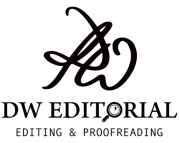The Different Levels of Editing
Someone once asked me, “I know you’re an editor, but do you ever do any writing?”
The truth is I have. In fact, many editors are themselves writers. In my case, I spent several months writing articles for a website that gives tips to startup companies, advising them of resources available to help them grow. And people seemed to like what I wrote.
However, I learned something important during that stint: Writing is hard. The mental effort it takes to do research, then turn that research into words that people want to read is enormous. Hats off to all those writers who churn out prodigious amounts of content each week.
Having put so much into your writing—whether it’s a book manuscript, a business report, a blog, or social media post—you’re now at the point where it’s time to think about partnering with an editor.
Yes, partnering.
Your editor is a part of your team, and their goal is to help you present your best work possible to your readers.
But how do you decide what kind of editing you need? I’ve had clients request proofreading when they really needed a deeper level of editing. So whether you’re a fiction or nonfiction writer, here’s a breakdown of the different levels of editing:
Proofreading
Proofreading can be compared to doing light weeding in a garden that’s basically shipshape, but just needs some tidying up. If you’re satisfied with your book—the story is logical, you’ve had it edited, it’s been formatted, and you’re about ready to publish—this would be the perfect time to proofread because you won’t be doing any further major editing. Proofreading is a surface check for errors in spelling, grammar, and punctuation, and it is vitally important. Proofreaders catch typos that have slipped through multiple rounds of editing, so if the temptation is to skip it, don’t. For even more reasons not to skip this step, check out this list of five benefits that come from hiring a proofreader.
Copyediting
Copyediting resembles proofreading in many aspects, but it goes deeper. The copy editor’s role is to ensure consistency throughout your manuscript. They will take note of your writing style and ensure that it is sustained across your entire project, and that words are used and spelled consistently throughout. For example, if you’re writing for a US audience, the copy editor sees to it that the word “organize” is always spelled with a z, and that there’s never an s at the end of the word “toward.” They will also do light fact-checking, making sure dates and statistics quoted are correct, and flag any instances of possible copyright infringement.
With the booming popularity of AI-generated content, copy editors are now more necessary than ever. Why? AI content, while grammatically correct, collates content from across the internet, often cobbling together text that doesn’t necessarily flow well. It might sound stilted, or it could lack color. Here’s where a skilled copy editor comes in. They’ll suggest alternative words or phrases to add some pep to content that could be, although technically correct, hard to read because it’s bland.
Line Editing
Also known as stylistic editing, line editing is the only level of editing that involves rewriting, adding, deleting, and at times, rearranging content. The editor looks at each paragraph and sentence with the aim of maintaining the writer’s style and amplifying their voice. They’ll cut down on wordiness, making the message clear and suitable for its intended audience. They’ll look at the flow of the manuscript to make sure the story unfolds logically. They will keep an eye out for awkward phrasing, word echoes, and redundancies, suggesting alternative words that would add variety in the content. If they come across a sudden change in tone that seems out of place somehow, they will flag it for the author’s attention. They will also look out for passive voice, which can dilute the strength of a sentence by sounding overly formal or distant.
Developmental Editing
This level of editing deals with the organization or structure of the content or story, so it’s also known as structural or content editing. The editor reads the material and assesses it for readability, flow, and logic. Think of it as story refinement; as the first phase of editing after a writer is finished with the final draft, this is where the story is fine-tuned before moving on to other stages of editing. The editor looks for issues in the content that obscure the message, preventing the reader from grasping the meaning as intended. They look at the whole story, ensuring it fulfills readers’ expectations by giving them the outcome they expect from that genre. At this level of editing, the editor doesn’t make changes to the actual text, but instead writes an editorial letter suggesting ways to enhance the content’s logic and flow, which the writer can choose (or not choose!) to implement.
So what level of editing do you need? Whether you know or not, why not book an appointment to discuss your project? No matter where you are in your writing journey, having a chat with an experienced editor would set you on track for publishing success. It will cost just a little time but the return on investment would be more than worth it—clarity and peace of mind.
 Five Benefits of Hiring a Proofreader Prev post
Five Benefits of Hiring a Proofreader Prev post 


